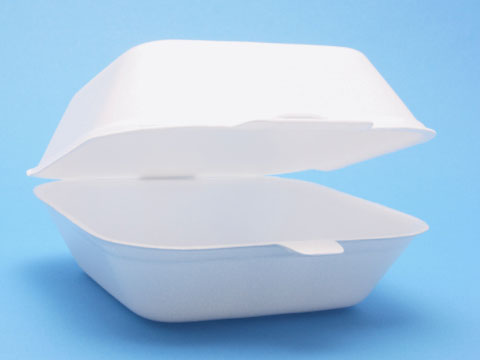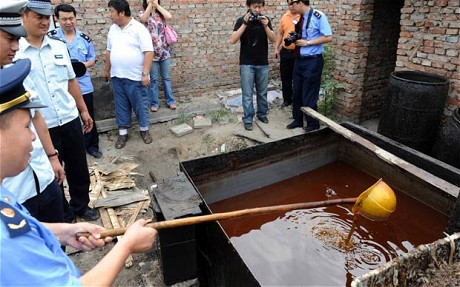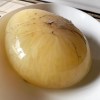
With the country growing at an unprecedented rate and many still living below the poverty line, it is inevitable that China should struggle to control the quality of the foodstuffs it manufactures. With a reputation for being cheap and of inferior quality, Chinese exports are often unfairly labelled as potentially harmful or unappetising, and many in neighboring countries will snub Chinese-produced consumables found on supermarket shelves purely because of where they come from. But when developed countries rely so much on cheap Chinese labor and exports, one sometimes has to wonder whether this is partly a problem of our own making.
Of course, Japan rarely sees eye-to-eye with China, so it is perhaps unsurprising that it should focus on the negative when it comes to news of this kind. This week in fact, website Madame Riri published an article outlining 10 cases of food products from China that have caused scandal in recent years. After reading their list, though, even we can’t help but feel a little concerned for the wellbeing of the world’s next superpower.
1.) Melamine-contaminated powdered milk
Beginning with what is by far the most tragic case in Madame Riri‘s list, in 2008 there were several cases of infants dying after consuming powdered milk that was found to be contaminated with melamine, a toxic chemical often (illegally) added to foodstuffs to increase the protein content. These infants subsequently developed kidney stones, with six believed to have died as a result. After the melamine was detected, exports of the product were also stopped, though not before an unknown quantity had already made its way around the world. In addition to the six reported deaths, the health of 29 million people was also affected in some way.
2.) Frozen green beans
This is a scandal that Japan, too, has been affected by in the past. In 2008, the chemical substance dichlorvos was detected in green beans produced by frozen food manufacturer Nichirei Foods. The detected levels of the substance reached such highs as 6,900 ppm, and exceeded the Japanese safety levels by a whopping 34,500 times. One housewife who cooked the beans reported that her tongue became numb when putting them in her mouth. As a precaution, she forced herself to throw them up, but ended up being admitted to hospital all the same.
3.) “Cancer-causing” bean sprouts
Moyashi bean sprouts are known for their short shelf life, and to prevent them from going bad quickly some unscrupulous companies in China are believed to be treating them with detergent to give the sprouts a “clean, white look.” This practice is, obviously, illegal but that doesn’t seem to halt the problem. Even more concerning is the use of growth hormones to promote the sprouts’ growth.
Consuming moyashi treated in this way can lead to cancer and the birth of children with disabilities. Although there is a restriction on hormone use in many towns in China, it is no more than a by-law and is taken worryingly lightly. To this end, a number of manufacturers are believed to be using hormones to some degree. But of course, one has to ask the companies in Japan that import these products and pay Chinese companies to farm the bean sprouts what they are doing to ensure their safety before we point the finger of blame at China alone…
4.) Milk containing animal skin and used leather from shoes
Milk which contained ingredients from waste animal skin garnered a lot of attention back in 2011. In an attempt to increase the protein content of the milk, manufacturers allegedly hydrolyzed used leather, animal skins and animal organs which they then turned into powder and mixed with milk. Protein produced from hydrolyzed leather contains the chemical hexavalent chromium, and when consumed over extend periods can cause poisoning or promote the onset of cancer. The leather that was used is thought to be made up of consumer products, scrap leather left over at from factories, old leather shoes and even leather found on household furniture. Now that is scary.
5.) Cardboard “nikuman” steamed buns
According to reports from a Chinese newspaper dated July 12, 2007, a street stall in Beijing mixed the material from cardboard boxes with the meat from “nikuman” steamed buns. The cardboard used was thought to have been soaked in sodium hydroxide, drained of color, chopped up into small pieces and then mixed with the meat. Tourists who have fallen ill from eating meat steamed buns or gyoza (steamed dumplings) also reported an unpleasant smell coming from their food.
6.) Blue-ear pig disease
Blue-ear pig disease is brought about by a virus that affects a pig’s respiratory and reproductive system. Normally the sale of pigs infected with the disease is prohibited, but there are also underground groups that make a living buying pigs that have died from the disease, and then selling the meat at market. These unsavory dealers are reported to buy the diseased pigs for around US$13 and sell them on the legal market for around US$130 or more. One can’t blame people for wanting to put bread on their table each day, but then there is a difference between making a living and making an honest one…
7.) Lean pigs
About 60 percent of pigs reared in China are reported to have significantly less body fat than is normal as a result of selective breeding and the use of artificial agents. Pigs with low body fat sell for significantly more on the market, however in order to achieve this, chemicals are used to alter the pigs’ physiological development. Possible side effects of eating pork that has been treated in this way include heart palpitations, numbness of the joints, dizziness, acute poisoning, and high blood pressure. For anyone with a heart condition, eating the meat could be life threatening.
8.) Takeaway boxes
In 2010, low-quality takeaway packs which contained paraffin or calcium carbonate were discovered on sale at the shopping mall “New Yansha”. The same packs were reported to be easily soluble in vinegar, and when come into contact in a dissolved state can cause gallstones, or even mental retardation in children. While they are much cheaper to manufacture than officially endorsed products, when you think about the health risks, you end up paying a different type of price.
9.) “Sewage oil”
The oil that comes out into the drains from nearby factories eventually forms in a “cream-like” state. As tragic as it sounds, there are people in China who make a living collecting the oil from the drains, refining it and selling it as a cheap alternative to salad oil. What anyone who gets a whiff of it cannot help but notice however, is the stomach-churning smell. The color before treatment is not very pretty either, and can only be described as a murky red color. The cheap oil is immediately distinguishable from real salad oil on the market due to its dark color. After the oil from the sewer has been filtrated, it is then heated and separated. Only after all these steps does the repugnant smell of the sewers disappear and is it ready for sale.
10.) Cadmium-contaminated rice
In 2002, the Chinese Ministry of Agriculture performed a sampling inspection into the health and safety of domestically produced rice. Inspectors noted that some batches of rice contained a lead content of up to 28.4 percent, which is considerably higher than domestic safety levels. Cadmium was also detected with a 10.3 percent contents level. Of the villagers who ate the cadmium-contaminated rice, many complained of osteomalacia (weakening of the bones), kidney failure, muscle deterioration, or acute pain in their limbs.
Although to some degree incidents related to diseases brought about by pollution and contamination can be seen all across the world, China clearly takes the lead when it comes to these type of incidents. But as the country grows, it is up to its leaders to enforce stricter laws and to ensure the safety of its food products, whether they be for consumption within China or for export. As well as this, we can’t help feeling that it is the responsibility of companies around the globe that turn to China to produce products on their behalf to ensure that standards are met, rather than simply demansing results at the lowest possible price. After all, there’s no supply without demand, so it seems unfair that those of us in more fortunate countries should sneer at cheap Chinese products when we, in fact, are so often the ones asking for them.
Source: Madame Riri









 Fear of food produced in China continues as new report claims at least 48% of it will make you sick
Fear of food produced in China continues as new report claims at least 48% of it will make you sick China’s Baidu announces high-tech chopsticks that will keep you safe, skinny and healthy
China’s Baidu announces high-tech chopsticks that will keep you safe, skinny and healthy Popular Japanese cafe chain apologises for using detergent instead of oil to fry their doughnuts
Popular Japanese cafe chain apologises for using detergent instead of oil to fry their doughnuts 16 facts about China that will blow your mind
16 facts about China that will blow your mind Japan’s first-ever micro pig cafe opens in Tokyo 【Pics & Video】
Japan’s first-ever micro pig cafe opens in Tokyo 【Pics & Video】 Beautiful new Final Fantasy T-shirt collection on the way from Uniqlo【Photos】
Beautiful new Final Fantasy T-shirt collection on the way from Uniqlo【Photos】 Our reporter takes her 71-year-old mother to a visual kei concert for the first time
Our reporter takes her 71-year-old mother to a visual kei concert for the first time Randomly running into a great sushi lunch like this is one of the best things about eating in Tokyo
Randomly running into a great sushi lunch like this is one of the best things about eating in Tokyo Disney princesses get official manga makeovers for Manga Princess Cafe opening in Tokyo
Disney princesses get official manga makeovers for Manga Princess Cafe opening in Tokyo Is the new Shinkansen Train Desk ticket worth it?
Is the new Shinkansen Train Desk ticket worth it? Coordinating a whole outfit with nothing but clothes from Japanese convenience store Family Mart
Coordinating a whole outfit with nothing but clothes from Japanese convenience store Family Mart Hanton rice — a delicious regional food even most Japanese people don’t know about, but more should
Hanton rice — a delicious regional food even most Japanese people don’t know about, but more should Foreign English teachers in Japan pick their favorite Japanese-language phrases【Survey】
Foreign English teachers in Japan pick their favorite Japanese-language phrases【Survey】 You COULD eat a terrifying octopus egg in Japan, but SHOULD you? Let’s find out!【Taste test】
You COULD eat a terrifying octopus egg in Japan, but SHOULD you? Let’s find out!【Taste test】 Princesses, fruits, and blacksmiths: Study reveals the 30 most unusual family names in Japan
Princesses, fruits, and blacksmiths: Study reveals the 30 most unusual family names in Japan We try out “Chan Ramen”, an underground type of ramen popular in the ramen community
We try out “Chan Ramen”, an underground type of ramen popular in the ramen community New Studio Ghibli bedding sets are cool in all senses of the word
New Studio Ghibli bedding sets are cool in all senses of the word Our Japanese reporter visits Costco in the U.S., finds super American and very Japanese things
Our Japanese reporter visits Costco in the U.S., finds super American and very Japanese things New Pokémon cakes let you eat your way through Pikachu and all the Eevee evolutions
New Pokémon cakes let you eat your way through Pikachu and all the Eevee evolutions There’s a park inside Japan where you can also see Japan inside the park
There’s a park inside Japan where you can also see Japan inside the park Japanese convenience store packs a whole bento into an onigiri rice ball
Japanese convenience store packs a whole bento into an onigiri rice ball Final Fantasy, Kingdom Hearts, and Dragon Quest pet product line announced by Square Enix
Final Fantasy, Kingdom Hearts, and Dragon Quest pet product line announced by Square Enix Studio Ghibli releases Kiki’s Delivery Service chocolate cake pouches in Japan
Studio Ghibli releases Kiki’s Delivery Service chocolate cake pouches in Japan Japan’s bone-breaking and record-breaking roller coaster is permanently shutting down
Japan’s bone-breaking and record-breaking roller coaster is permanently shutting down New definition of “Japanese whiskey” goes into effect to prevent fakes from fooling overseas buyers
New definition of “Japanese whiskey” goes into effect to prevent fakes from fooling overseas buyers Foreign passenger shoves conductor on one of the last full runs for Japan’s Thunderbird train
Foreign passenger shoves conductor on one of the last full runs for Japan’s Thunderbird train Kyoto bans tourists from geisha alleys in Gion, with fines for those who don’t follow rules
Kyoto bans tourists from geisha alleys in Gion, with fines for those who don’t follow rules Studio Ghibli unveils Mother’s Day gift set that captures the love in My Neighbour Totoro
Studio Ghibli unveils Mother’s Day gift set that captures the love in My Neighbour Totoro Domino’s Japan now sells…pizza ears?
Domino’s Japan now sells…pizza ears? Toyota built a life-sized Miraidon Pokémon and are letting people test drive it this weekend
Toyota built a life-sized Miraidon Pokémon and are letting people test drive it this weekend New Japanese KitKat flavour stars Sanrio characters, including Hello Kitty
New Japanese KitKat flavour stars Sanrio characters, including Hello Kitty Sales of Japan’s most convenient train ticket/shopping payment cards suspended indefinitely
Sales of Japan’s most convenient train ticket/shopping payment cards suspended indefinitely Sold-out Studio Ghibli desktop humidifiers are back so Totoro can help you through the dry season
Sold-out Studio Ghibli desktop humidifiers are back so Totoro can help you through the dry season Japanese government to make first change to romanization spelling rules since the 1950s
Japanese government to make first change to romanization spelling rules since the 1950s Ghibli founders Toshio Suzuki and Hayao Miyazaki contribute to Japanese whisky Totoro label design
Ghibli founders Toshio Suzuki and Hayao Miyazaki contribute to Japanese whisky Totoro label design Doraemon found buried at sea as scene from 1993 anime becomes real life【Photos】
Doraemon found buried at sea as scene from 1993 anime becomes real life【Photos】 Tokyo’s most famous Starbucks is closed
Tokyo’s most famous Starbucks is closed One Piece characters’ nationalities revealed, but fans have mixed opinions
One Piece characters’ nationalities revealed, but fans have mixed opinions We asked a Uniqlo employee what four things we should buy and their suggestions didn’t disappoint
We asked a Uniqlo employee what four things we should buy and their suggestions didn’t disappoint Studio Ghibli’s new desktop Howl’s Moving Castle will take your stationery on an adventure
Studio Ghibli’s new desktop Howl’s Moving Castle will take your stationery on an adventure Family Mart and Mos Burger join forces for a special new steamed bun in Japan
Family Mart and Mos Burger join forces for a special new steamed bun in Japan Fukushima bottled water wins Gold Quality Award in the internationally coveted Monde Selection
Fukushima bottled water wins Gold Quality Award in the internationally coveted Monde Selection Gorgeous handmade, made-in-Japan Ghibli leather wallets return to Donguri Kyowakoku【Photos】
Gorgeous handmade, made-in-Japan Ghibli leather wallets return to Donguri Kyowakoku【Photos】 Pufferfish or plane crashes? What causes more deaths in Japan?
Pufferfish or plane crashes? What causes more deaths in Japan? Tasteless candy on sale at Lawson convenience stores
Tasteless candy on sale at Lawson convenience stores Synthetic fossil fuels made from light, water, and CO2 in the air tested in Osaka
Synthetic fossil fuels made from light, water, and CO2 in the air tested in Osaka The true identity of Cup Noodle’s “mystery meat”
The true identity of Cup Noodle’s “mystery meat” Dumplings that’ll make you pretty! “Gyoza for girls” is the new food trend hitting Japan!
Dumplings that’ll make you pretty! “Gyoza for girls” is the new food trend hitting Japan! Costco opened its first store in China, and things immediately got crazy【Video】
Costco opened its first store in China, and things immediately got crazy【Video】 Health Tip: Drinking live pig’s blood may lead to worms in your brain
Health Tip: Drinking live pig’s blood may lead to worms in your brain How do people in Japan feel about eating whale? We asked five people for their opinions
How do people in Japan feel about eating whale? We asked five people for their opinions Ippudo serves up plant-based tonkotsu ramen in Japan for a limited time
Ippudo serves up plant-based tonkotsu ramen in Japan for a limited time The aftermath of that huge fuel explosion in China looks like a post-apocalyptic video game
The aftermath of that huge fuel explosion in China looks like a post-apocalyptic video game Maiko beauty secrets: Skincare tips from Japan’s apprentice geisha
Maiko beauty secrets: Skincare tips from Japan’s apprentice geisha Japan’s biggest ham company is making “tuna” that contains neither ham nor fish
Japan’s biggest ham company is making “tuna” that contains neither ham nor fish Testing out the legendary hair growing power of kinako【RocketScience】
Testing out the legendary hair growing power of kinako【RocketScience】
Leave a Reply